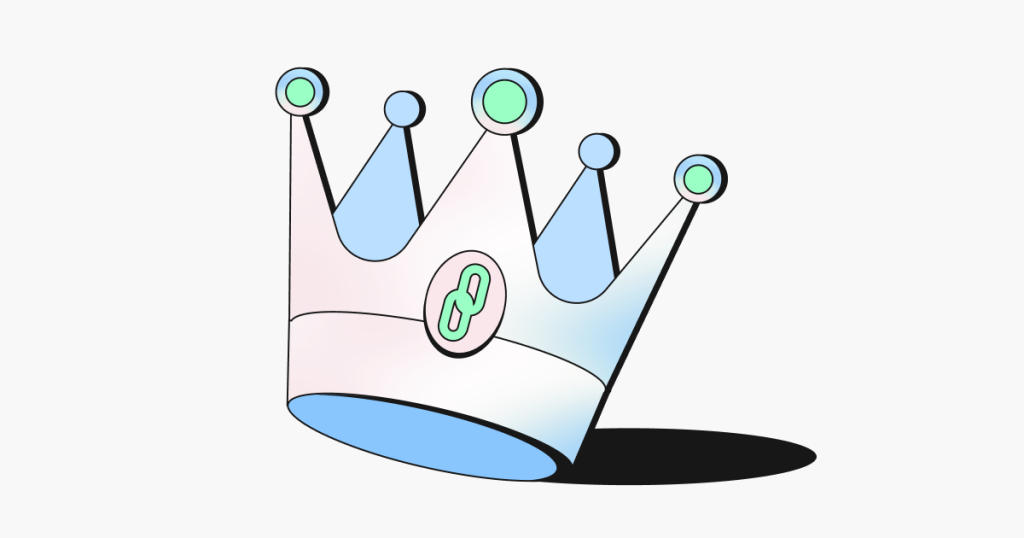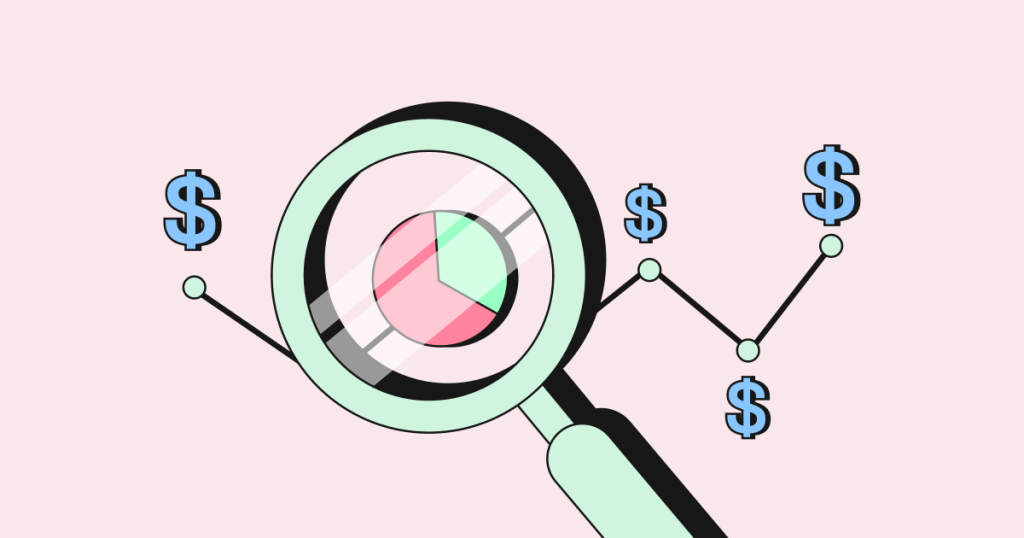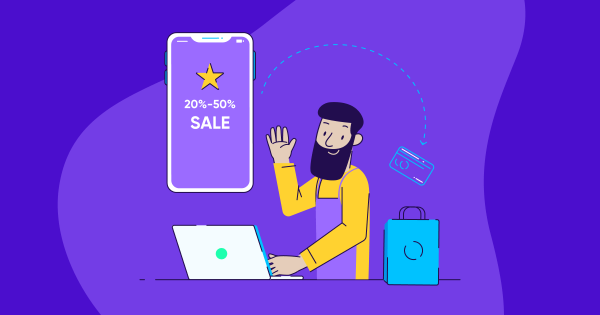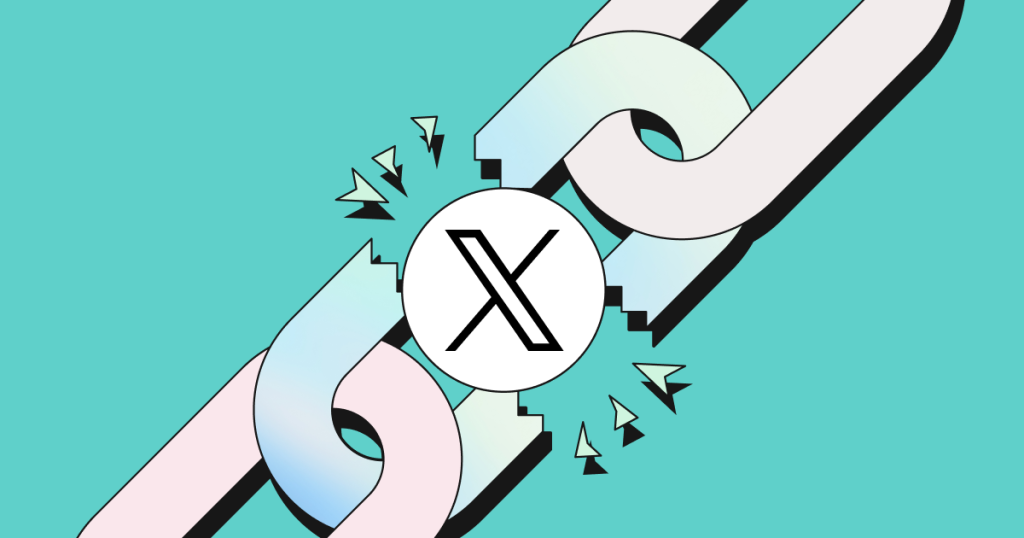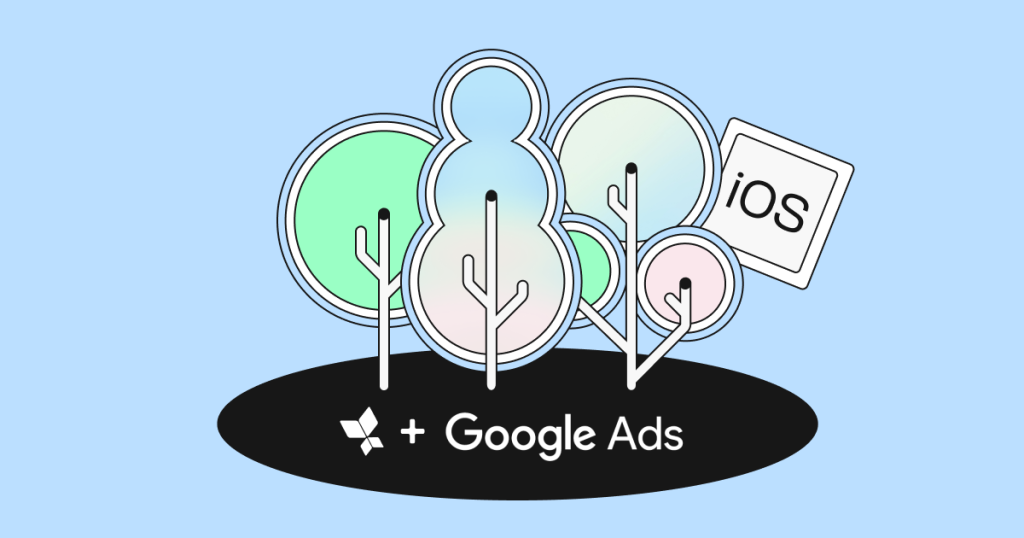18 metrics eCommerce marketers should measure


eCommerce mobile marketers live and breathe measurement – CAC, cLTV, ROAS, and so many other two-to-four-letter acronyms.
However, not all metrics are created equal.
Given the variety of KPIs to choose from, only careful selection of the right combination leads to the meaningful insights used to drive important marketing decisions.
For eCommerce businesses, these insights can help you answer some of the most pressing questions in the industry today, such as:
- Which channels bring the most purchasing customers?
- Which campaigns are the most efficient and profitable?
- Why and when customers churn?
- What is your cLTV and how can you improve it?
The spread of the coronavirus has led many to online channels. According to our State of Shopping App Marketing report, the activity in eCommerce apps surpassed even the rush that was seen in the holiday shopping season. As a result, we expect the upcoming holiday season to be one for the record books.
Having the right measurement framework to measure the metrics that matter is vital. To point you in the right direction and help you optimize your eCommerce business this Q4 and beyond, we’ve taken a deep dive into 18 important eCommerce metrics.
1. Customer acquisition cost (CAC)
Definition: CAC is the cost of acquiring a new customer.
Acquisition cost can be calculated by different payment methods such as CPM, CPC, CPA, and CPI.
Usually CAC goes hand-in-hand with the LTV metric to measure how much a new customer costs compared to the total revenue they’re expected to generate.
CAC: Total cost of acquiring customers in set time frame / number of customers acquired in same time frame
Why it matters: Marketers use this KPI to optimize the return on their advertising spend (“ROAS”). If the cost of acquiring paying customers can be reduced, the company’s profit margin improves to generate a larger profit.
CAC can be contrasted against other metrics to judge the efficiency of your app’s sales and marketing efforts. For example, an inbound marketing strategy may raise a company’s CAC when it is first implemented, but could reduce the CAC over time.
2. Customer retention rate (CRR)
Definition: Customer retention rate is a marker of how loyal your customers are and can be attributed to two both purchases and activity, depending on what you want to measure.
Essentially, what it does is takes a group of customers who shopped with you in some historical period of time (e.g. 1-12 months ago) and determines the proportion of those customers that you’d still consider active now because they’ve shopped recently (e.g within the last three months).
CRR: [(Number of customers at the end of a period – total number of new customers during that period) / total number of customers at the beginning of that period]
Why it matters: A high retention rate demonstrates that your app provides value to customers, generating repeat usage. It affects the basis of your marketing strategy and is a key in predicting your app’s performance over time.
Retention rates help you build UA strategies and plan budget distribution between the different channels you work with.
In addition, unlike purchase repeat rate (PRR), retention rate incorporates a window of time between two orders in order to look at longer-term loyalty. The window of time that you choose to use is dependent on the types of product you sell.
For example, a grocery store would use a shorter order window than a bed company.
As a rolling metric, it’s a great way to see whether your customers are becoming more, or less, loyal. The truth is, however, that every business will have a different definition of what this should be.
Retention rates in mobile apps can also be driven by pure activity rather then purchases, and it is calculated as follows:
Retention rates: Number of unique users who launched the app at least once during a specific day/week since the install day or week / Total number of users who launched the app for the first time during the selected date range
3. Customer lifetime value (cLTV)
Definition: cLTV is the value each customer generates for your business. To improve the cLTV you should improve your customer experience and increase customer loyalty.
To calculate the cLTV you should multiply the average revenue per customer with the average customer lifespan.
cLTV: Average revenue per user X average customer lifespan
Why it matters: cLTV helps evaluate the total revenue, or value, of a customer and is the strongest indication of how much can be spent on customer acquisition while remaining profitable (CAC < cLTV) — absolutely vital information for any marketer. In addition, every eCommerce business must know their cLTV as it can affect every aspect related to your business strategy.
Mobile commerce in 2023: What, why & how
4. Share of non-organic Installs
Definition: The percentage of marketing-driven installs out of your total installs.
Share of NOI: Number of non-organic installs in a defined time frame / total number of installs in the same period
Why it matters: Understanding your install type split will help you determine your app’s halo effect and the ratio between a paid and an organic user. You can further break down non-organic installs to paid and owned media (e.g. SMS, web-to-app conversions, email) to understand when you can actually save money by using more of your own rather than paid media properties.
5. Churn rate
Definition: The rate that measures the pace at which your customers become inactive.
Monthly Churn rate: [(Total number of customers at the beginning of the month – total number of customers at the end of the month) / total number of customers at the beginning of the month] X 100
Why it matters: Analyzing this KPI allows you to drill down into factors that may have led to app abandonment – for example, campaigns directed to the wrong link, irrelevant retargeting, etc. Improving this KPI will help generate more buying opportunities, thus increasing cLTV.
6. Uninstall rate
Definition: Measures the rate at which users who installed your app uninstall it.
Uninstall Rate: Number of users who uninstalled an app within a pre-defined window / total number of users who installed the app during a set time frame
Why it matters: The rate of uninstalls can help compare the quality of the users you acquire from different media sources, campaigns, single ads or countries. It is a stronger indication than simply becoming inactive and a high rate may indicate that something is wrong with your app or onboarding process, or that your promotions did not match the user’s expectations.
It also protects user privacy since many advertisers run re-engagement campaigns to retain users who uninstalled. However, doing so may contradict the app store’s terms of use and is not considered good practice. If this is the case use the uninstall data to remove uninstallers from remarketed audiences.
7. Bounce rate
Definition: This KPI tells you how many customers leave your app after viewing only one page.
Higher bounce rates can occur after a remarketing conversion, when a user is sent directly to a specific page on the app and leaves without taking any action, or during a user acquisition campaigns if users did not see what they expected (i.e. because there was no deep linking in place, or because there was a gap between the promotion and the app landing page).
Bounce Rate: Total number of one-page visits / total number of app sessions
Why it matters: A high bounce rate can indicate low quality UA sources and landing pages that aren’t optimized for conversion (poor design, low usability, high load times, etc). Eventually a high bounce rate will definitely hurt your bottom line.
8. Average app session duration
Definition: This metric shows the average amount of time customers spend on your app per single visit.
A session begins the moment a visitor arrives at your app and ends when they exit or remain inactive for a predetermined time span. As long as the visitor interacts with your app, the session continues.
Average Session Duration: Total Sessions Duration / Total Number of Sessions
Why it matters: Measuring session lengths and analyzing them based on segments will help marketers to plan their campaigns better, and will help to identify high quality users vs. users who are less engaged.
9. Conversion rate (CVR)
Definition: The percentage that identifies at what rate people are progressing in your app’s funnel. The CVR can be measured between any two events you define, such as install to purchase, add to cart to purchase, etc.
CVR: (Total number of initial event in the app / total number of desired event conversions) x 100
Why it matters: During a campaign a click through conversion rate (CTR) indicates a creative variation’s ability to attract a user and drive engagement with your ad, while a click to install rate can inform marketers about their creative and whether their app store page is properly optimized.
Down-funnel conversion rates (e.g. install to purchase) is an excellent indication of user quality to guide segmentation and marketing decisions.
10. Shopping cart conversion rate (CCR)
Definition: This KPI measures how many customers actually complete the checkout process by purchasing the products in their cart.
CCR: (Total purchase conversions / total number of customers that added products to cart) x 100
Why it matters: For marketers, this KPI enables various segmentation options when remarketing to engaged users (e.g. discounts to users who abandoned their cart encouraging them to complete their purchase).
11. Repeat purchase rate (RPR)
Definition: The RPR can tell you the number of customers that return to your app in order to make an additional purchase. It can help you with measuring customer loyalty as well as plan your sales strategies.
RPR: Purchases from existing customers / total purchases
Why it matters: Repeat purchases drive higher LTV for each acquired or organic customer. The higher the repeat purchase rate, the higher the ROI.
The fact that people buy from you repeatedly also means they like your product, that you have found the right audience, and that your targeting is synced and relevant for your clients.
In addition, repeat purchases indicate people are loyal to your brand and are probably recommending it to their friends. The more devoted they are, the stronger your community. Marketers should nurture these users, target them wisely, and give them special offers that will later translate into more purchases and a better k-factor (virality).
12. Purchase frequency (PF)
Definition: The purchase frequency value measures the average number of orders your customers made during a specific period of time. This is an ideal KPI to measure customer loyalty and to highlight underperforming products or categories.
PF: Total number of purchases over a time period / total number of unique customers during the same time period
Why it matters: An extremely strong metric to indicate customer loyalty, the ability to identify these users for smarter lookalike targeting and remarketing can make a big difference (for example by rewarding them, or even in some cases to exclude them from paid remarketing as they are highly engaged – there’s no need to spend money marketing to them).
13. Time between purchases (TBP)
Definition: This KPI shows how long a customer goes before making an additional purchase. You can use this KPI to customize your campaigns per customer behaviors.
TBP: 365 / purchase frequency
Why it matters: Time between purchases is a metric that shows you how often an average customer goes before making a repeat purchase. This is a good KPI to measure because it allows you to tailor retargeting and owned campaigns to their behaviors.
14. Average order value (AOV)
Definition: AOV tells you how much your customers usually spend in a single order.
AOV: Total revenue / number of orders
Why it matters: Average order value (AOV) is a useful KPI for measuring customer behavior, to identify different segments according to spend, or to see which channels are most effective in terms of revenue.
15. Return on ad spend (ROAS)
Definition: Return on advertising spend, (ROAS), is a marketing metric that measures the efficacy of an advertising campaign. It helps online businesses evaluate which methods are working and how they can improve future advertising efforts.
ROAS: Revenue generated from an ad campaign / cost of the ad campaign
Why it matters: This metric is the holy grail for performance app marketers. It tells you how much money you make on every dollar you spend on advertising — in other words if you are profitable! This allows you to adjust your ad campaigns or exclude products that are not worth their high ad costs.
16. Cost per acquisition (CPA)
Definition: Cost per acquisition is a marketing metric that measures the aggregate cost to acquire one paying customer on a campaign or channel level. CPA is a vital measurement of marketing success, generally distinguished from Cost of Acquiring Customer (CAC) by its granular application.
CPA: Total campaign cost / number of conversions
Why it matters: Knowing your cost per conversion is key. How much money are you paying, on average, to get someone to actually buy your products? You can then compare this to the price of the product to see which items are doing well and which ones are underperforming. And, naturally, you will be able to see if your CPA on one site is higher or lower than it is on another site.
17. Number/share of first-time purchasers driven by remarketing
Definition: The number or share of users who complete a purchase after engaging with a remarketing ad within a pre-defined window.
Share of first-time purchasers: The number or share of users who complete a purchase after engaging with a remarketing ad / The number or share of users who complete a purchase
Why it matters: App remarketing is all but mainstream among shopping app marketers, and in many cases makes up the lion’s share of marketing conversions (vs. non-organic installs). With UA costs increasingly rising, remarketing’s huge success on the web is also replicated in apps.
18. Web-to-app conversion
Definition: The share of users who start their buying journey on the web and convert in the app.
Web-to-app conversion: The number of conversions in app / Total number of users who start on web and install the app
Why it matters: In a world where users constantly switch between devices, and considering that Google searches end up in mobile web sites, it is highly recommended to convert them to the app. The native app offers a far better user experience and has shown much higher conversion rates than the web. A smart web to app banner can encourage them to install the app and this is great use of your owned media.
The final word
Don’t overcomplicate it and don’t use too many metrics. Experiment to find the best ones for your app and optimize them to their full potential.
With every action they take in your app (or inaction), your customers are signaling to you what to measure. This should be your best indication of what’s important now and what will matter tomorrow.


